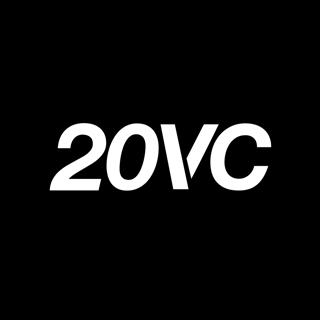
20VC: Base44's Maor Shlomo on How Vibe Coding Will Kill SaaS and Salesforce | Why it is BS that Vibe Coding Platforms Do Not Have Defensibility and Bad Margins | Why He Worries About Google, Not Replit and Lovable | Why Long Anthropic, Not OpenAI?
Maor Shlomo is the Founder and CEO of Base44, the AI building platform that Maor built from idea to $80M acquisition by Wix, in just 8 months. Today the company serves millions of users and will hit $50M ARR by the end of the year. Before Base44, Maor was the Co-Founder and CTO of Explorium. AGENDA: 00:05 – 00:10: How Vibe Coding is Going to Kill Salesforce and SaaS 00:13 – 00:15: Do Vibe Coding platforms have any defensibility? 00:22 – 00:24: I am not worried about Replit and Lovable, I am worried about Google… 00:28 – 00:29: Margins do not matter, the price of the models will go to zero 00:31 – 00:32: Speed to copy has never been lower; has the technical moat been eroded? 00:47 – 00:48: How does Base44 beat Cursor? 00:56 – 00:57: Do not pay attention to competition: focus on your business 00:57 – 00:58: How Base44 is helped, not hurt by not being in Silicon Valley? 00:58 – 00:59: What percent of code will be written by AI in 12 months? 01:01 – 01:02: OpenAI or Anthropic: Why Maor is Long Anthropic? 01:03 – 01:04: If I could have any board member in the world it would be Jack Dorsey
24 Marras 1h 11min
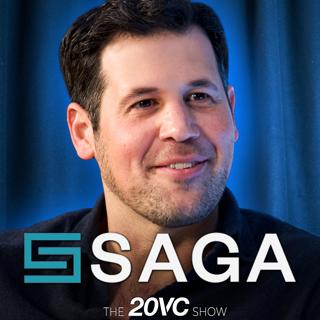
20VC: Max Altman on The New Seed War: Can Anyone Compete with Sequoia and a16z | Leaving $2BN on the Table with Reddit | Lessons from Backing Rippling at $25M Post | Why Climate Tech is a Mirage and Disaster
Max Altman is Co‑Founder & Managing Partner at Saga Ventures, a US$125 M early‑stage fund. Before Saga Max was an investor with Apollo Projects, Hydrazine Capital and Altman Capital (where he helped deploy over US$500 M) into breakout names such as Rippling and Reddit. AGENDA: 03:55 – Venture Capital Is FULL of Tourists With Single-Digit IQs 06:20 – Inside the Madness of Parker Conrad: Genius, Chaos, and WTF Emails 10:35 – The Rippling Deal That Changed Everything 12:40 – Living in Sam Altman's Shadow: The Confession 17:30 – $200M Fund Mistakes: Max's Brutal Lessons From Hydrazine 22:05 – The $2B Reddit Return… and the $2B Left on the Table 25:00 – Why Climate Tech Is a Total VC Mirage 28:40 – The New Seed War: Can Anyone Survive Sequoia & Andreessen? 46:55 – Max's Boldest Predictions
21 Marras 1h 19min
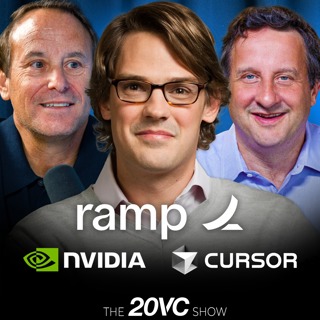
20VC: Cursor Raises $2.3BN: Who Wins the Coding War | Peter Thiel and Softbank Sell NVIDIA: Analysed | Why Venture Capital Will Hit $1TRN and the Opening of Retail | Why Stripe and the Best Companies Will Never Go Public
AGENDA: 04:47 Cursor Raises $2.3BN at $29BN Valuation 11:36 What Gemini 3 Means for Lovable, Cursor and Replit 30:54 Peter Thiel and Softbank Sell NVIDIA: The Bubble Bursting? 48:54 Oracle Credit Default Swaps: The Risk is Increasing 01:07:22 Stripe Does Tender at All-Time High: Why the Best Companies Will Never IPO 01:19:18 Why Retail WIll Cause a Surge of Capital into VC Funds
20 Marras 1h 22min
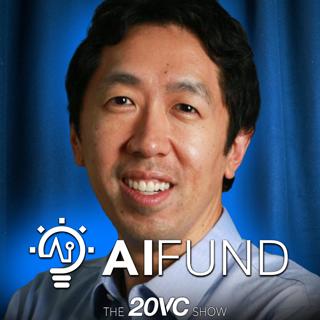
20VC: Andrew NG on The Biggest Bottlenecks in AI | How LLMs Can Be Used as a Geopolitical Weapon | Do Margins Matter in a World of AI? | Is Defensibility Dead in a World of AI? | Will AI Deliver Masa Son's Predictions of 5% GDP Growth?
Dr. Andrew Ng is a globally recognized leader in AI. He is Founder of DeepLearning.AI, Executive Chairman of LandingAI, General Partner at AI Fund, Chairman and Co-Founder of Coursera. As a pioneer in machine learning Andrew has authored or co-authored over 200 research papers in machine learning, robotics and related fields. In 2023, he was named to the Time100 AI list of the most influential AI persons in the world. Agenda: 03:19 What are the Biggest Bottlenecks in AI Today? 08:51 How LLMs Can Be Used as a Geopolitical Weapon 15:48 Should AI Talent Really Be Paid Billions? 29:07 Why is the Application Layer the Most Exciting Layer? 36:22 Do Margins Matter in a World of AI? 38:02 Is Defensibility Dead in a World of AI? 45:29 Will AI Deliver Masa Son's Predictions of 5% GDP Growth? 49:39 Are We in an AI Bubble? 57:31 Will Human Labour Budgets Shift to AI Spend?
17 Marras 1h 2min

20Product: How AI Changes Product Design | Does the Design Phase Become Irrelevant in a World of Vibe Coding | The Five Pillars of Truly Great Product Design with Carl Rivera, Chief Design Officer at Shopify
Carl Rivera is the Chief Design Officer at Shopify, where he previously led both Merchant Services and the Shop App as VP of Product. Before joining Shopify through its acquisition of Tictail, Carl was the co-founder and CEO of Tictail, the "Tumblr for e-commerce," where he built one of the most beloved design-forward commerce platforms of its era. AGENDA: 05:05 Biggest Lessons from Selling My Company to Shopify 09:55 Where Does Shopify Suck at Product: Lessons from that? 17:37 What makes Truly Great product Design: The Five Pillars 31:02 The Future of Design in an AI-Driven World 36:00 Do We Skip the Design Phase in AI: Figma's Evolving Role in Design 40:09 Remote Work vs. In-Person Collaboration: Where Remote Loses? 42:43 What Happens to the Vibe Coding Market 47:06 Product Management and Team Dynamics 59:48 Does AI Favour Incumbents or Startups
14 Marras 1h 11min

20VC: Sequoia's Leadership Transition | Michael Burry Shorts NVIDIA and Palantir | Gamma Raises $100M at $2BN | Has Defensibility Died in a World of AI | Datadog Surges as Duolingo Plummets: What is Happening
AGENDA: 04:22 Sequoia's Leadership Transition 09:46 Michael Burry's Big Short on Nvidia and Palantir 17:41 Gamma Raises $100M at a $2BN Valuation 32:34 Does Defensibility Exist Today When Copying is Easy 40:31 Should All Funds Be Way More Diversified 47:12 How to Run a Fundraising Process & What Not To Do 57:57 Datadog Surges 20% and Duolingo Crashes: What Happened
13 Marras 1h 15min
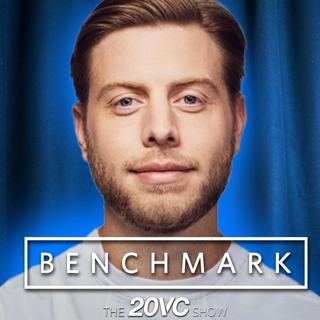
20VC: Benchmark's Newest General Partner Ev Randle on Why Margins Matter Less in AI | Why Mega Funds Will Not Produce Good Returns | OpenAI vs Anthropic: What Happens and Who Wins Coding | Investing Lessons from Peter Thiel and Mamoon Hamid
Ev Randle is a General Partner @ Benchmark, one of the best funds in venture capital. In their latest fund, they have Mercor ($10BN valuation), Sierra ($10BN valuation), Firework ($4BN valuation), Legora ($2Bn valuation) and Langchain ($1.4Bn valuation). To put this in multiples on invested capital, that is a 60x, two 30x and two 20x. Before Benchmark, Ev was a Partner @ Kleiner Perkins and before Kleiner, Ev was an investor at Founders Fund and Bond. AGENDA: 05:25 Biggest Investing Lessons from Peter Thiel, Mary Meeker and Mamoon Hamid 14:36 OpenAI Will Be a $TRN Company & OpenAI or Anthropic: Who Wins Coding? 22:27 Why We Should Not Focus on Margin But Gross Dollar Per Customer 30:25 Why AI Labs are the Biggest Threat to AI App Companies 44:26 Do Benchmark Fire Founders? If so… Truly the Best Partner? 54:38 People, Product, Market: Rank 1-3 and Why? 57:36 Why the Mega Funds Have Just Replaced Tiger 01:04:08 GC, Lightspeed and a16z Cannot Do 5x on Their Funds… 01:14:09 Single Biggest Threat to Benchmark
10 Marras 1h 25min

20Sales: Why You Need a CRO Pre-Product | Why Remote Sales Teams Do Not Work | How Snowflake Built a Sales Machine with Chad Peets
Chad Peets is one of the greatest sales leaders and recruiters of the last 25 years. From 2018 to 2023, Chad was a Managing Director at Sutter Hill Ventures. Chad has worked with the world's best CEOs and CROs to build world-class go-to-market organizations. Chad is currently a member of the Board of Directors for Lacework and Luminary Cloud and on the boards of Clumio and Sigma Computing. He previously served as a board member for Astronomer, Transposit, and others. He was an early-stage investor at Snowflake, Sigma, Observe, Lacework, and Clumio. In Today's Discussion with Chad Peet's We Discuss: 1. You Need a CRO Pre-Product: Why does Chad believe that SaaS companies need a CRO pre-product? Should the founder not be the right person to create the sales playbook? What should the founder look for in their first CRO hire? Does any great CRO really want to go back to an early startup and do it again? 2. What Everyone Gets Wrong in Building Sales Teams: Why are most sales reps not performing? How long does it take for sales teams to ramp? How does this change with PLG and enterprise? What are the benchmarks of good vs great for average sales reps? How do founders and VCs most often hurt their sales teams and performance? 3. How to Build a Hiring Machine: What are the single biggest mistakes people make when hiring sales reps and teams? Are sales people money motivated? How to create comp plans that incentivise and align? Why does Chad believe that any sales rep that does not want to be in the office, is not putting their career and development first? Why is it harder than ever to recruit great sales leaders today? 4. Lessons from Scaling Sales at Snowflake: What are the single biggest lessons of what worked from scaling Snowflake's sales team? What did not work? What would he do differently with the team again? What did Snowflake teach Chad about success and culture and how they interplay together?
7 Marras 1h 9min
